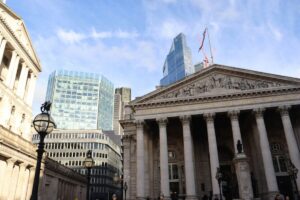After an extremely challenging environment for markets 2022, many asset classes have delivered solid returns this year. However, are there dangers lurking around the corner? As we move towards the end of 2023, several investors share what is ‘spooking’ them most this Halloween.
Arif Husain, head of international fixed income at T. Rowe Price
While we believe short-dated fixed income is attractive in many places, we hold serious concerns about the long end of many global government bond markets. Governments around the globe will need to boost sovereign debt issuance to pay for ballooning fiscal deficits, largely as a result of Covid-era policies. Yields will need to increase across the board to attract buyers to take up the flood of supply.
A huge boost in high-quality government bond issuance could also crowd out many other borrowers, or at least force up funding rates for corporate borrowers and others that need to refinance. This would raise the cost of funds for corporations and make them less likely to spend on capital projects or hiring more employees, removing a vital source of support for the global economy just when it needs it most.
Toby Hayes, portfolio manager of the Trium Alternative Growth Fund
A foreboding shadow looms over the global financial markets, casting doubts about the sustainability of the economic recovery and raising the question: is a market crash on the horizon? Unseen, lurking in the shadows, lies perhaps the greatest harbinger of doom: the repo account. This account held at the Fed was the ultimate destination of roughly half the central bank’s QE printing. Money-market participants used it to stash newly printed cash and earn a measly pickup over the now long-forgotten zero yields.
As yields have now risen, this money over the past few months has flooded back into onshore markets and, in the process, supported credit and equity markets. It is perhaps the singular reason why US equities and credit have held up so well. But in a few months, the money will be spent, and the dollar liquidity feast will quickly turn to famine. Risk assets beware.
Barry Norris, portfolio manager of the VT Argonaut Absolute Return Fund
The current ‘disinversion’ of the US treasury yield curve has perplexed many market participants, given the ongoing moderation of headline inflation measures. We are witnessing the early stages of a bond market revolt against unfettered government spending at a time of full employment.
The Fed, which owns $5trn of US government debt, is currently reducing its holdings by $95bn per month – or $1.14trn annualised. Foreigners own $7.7trn – notably Japan at $1.1trn and China at $835bn – but can no longer be relied upon to recycle capital into treasuries. About $5trn – or 20% of US government debt – is currently in bills maturing over the next 12 months. This means there is at least a $9trn gross, or $4trn net, annual supply imbalance in the US treasury market. This $4trn funding gap compares to current institutional investor ownership of US government debt of just $8.8trn. In other words, investors must continue to feed the Treasury deficit beast. This has the potential to cause a 1987-style stock market crash.
Gaël Fichan, Head of Fixed Income at bank SYZ
High yield bonds could come under pressure in this very uncertain environment. Recession fears, expectations of higher default rates and one of the most aggressive monetary policies are expected to weigh on this segment. The current US high yield spread implies modest default rates and the absence of inflation slippage, or a near-term recession.
In emerging market debt, we maintain a vigilant stance due to valuation and potential risk considerations. Higher oil prices and a strong US dollar pose challenges for oil-importing EM nations, especially Asian countries, while some Latin American countries may benefit.















